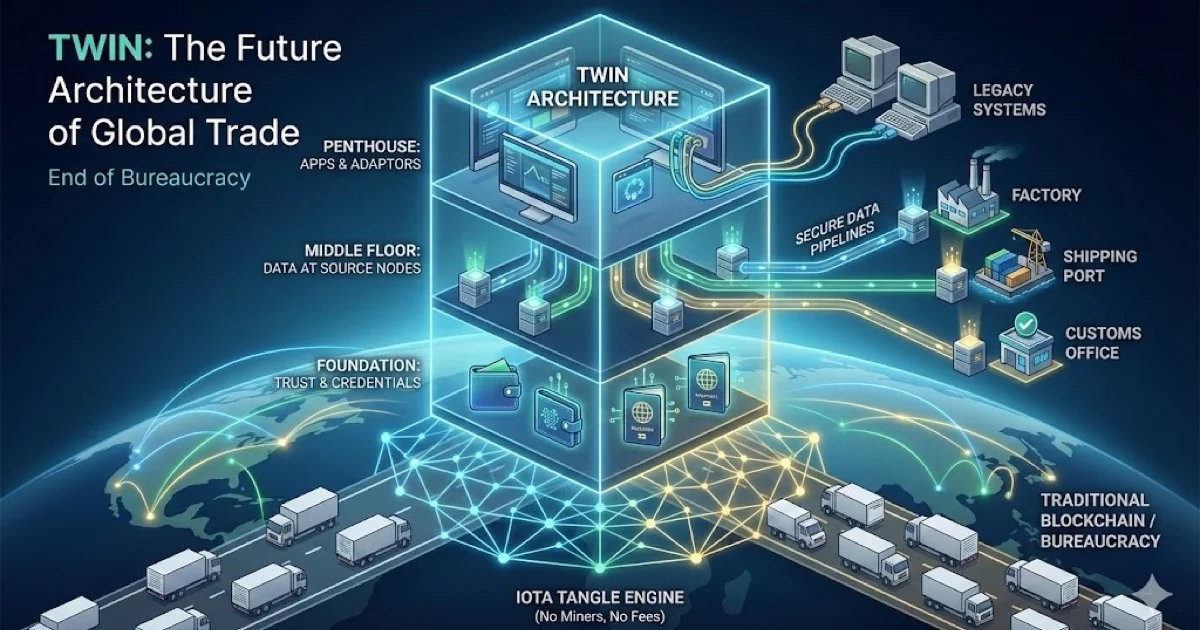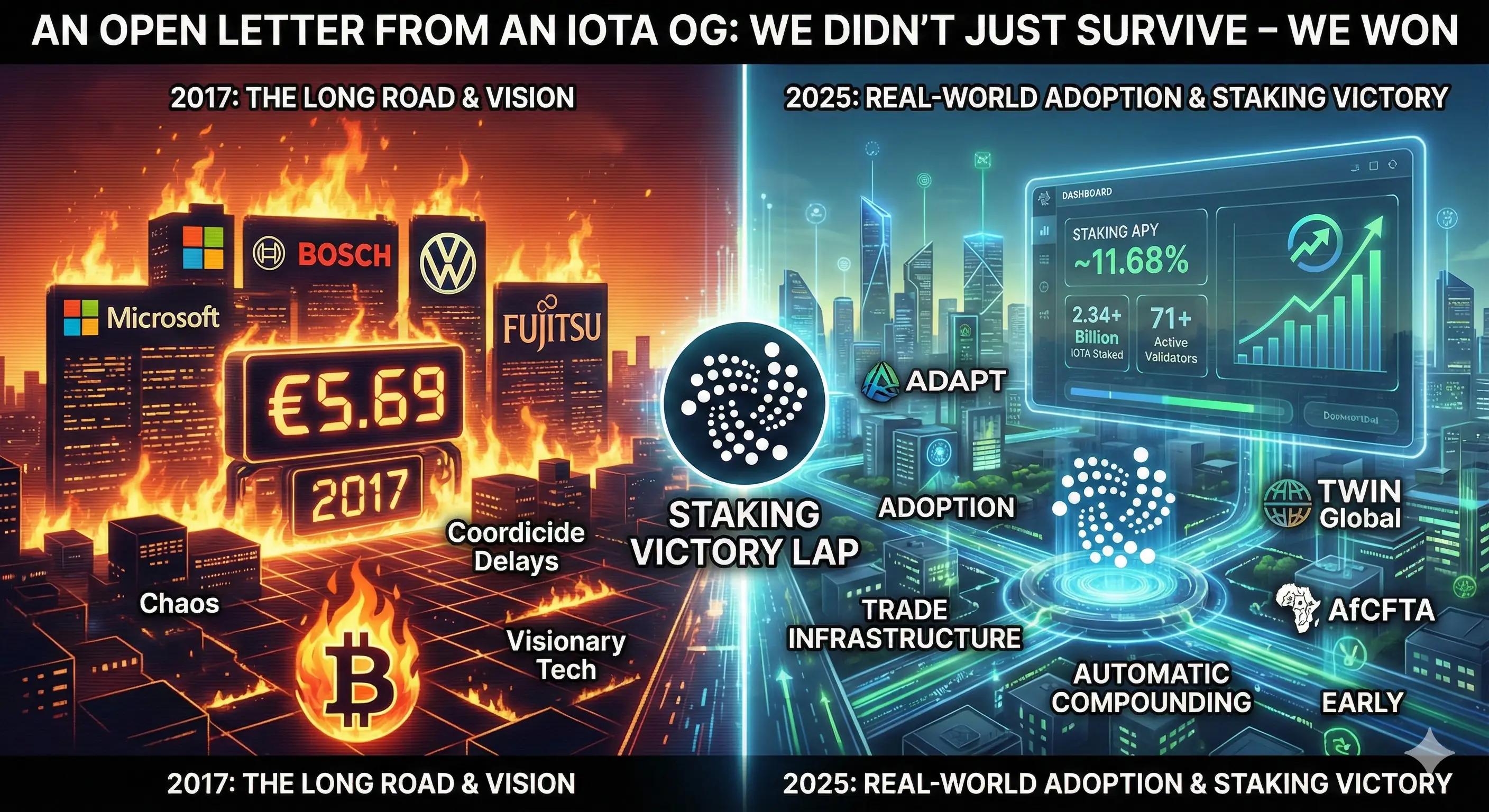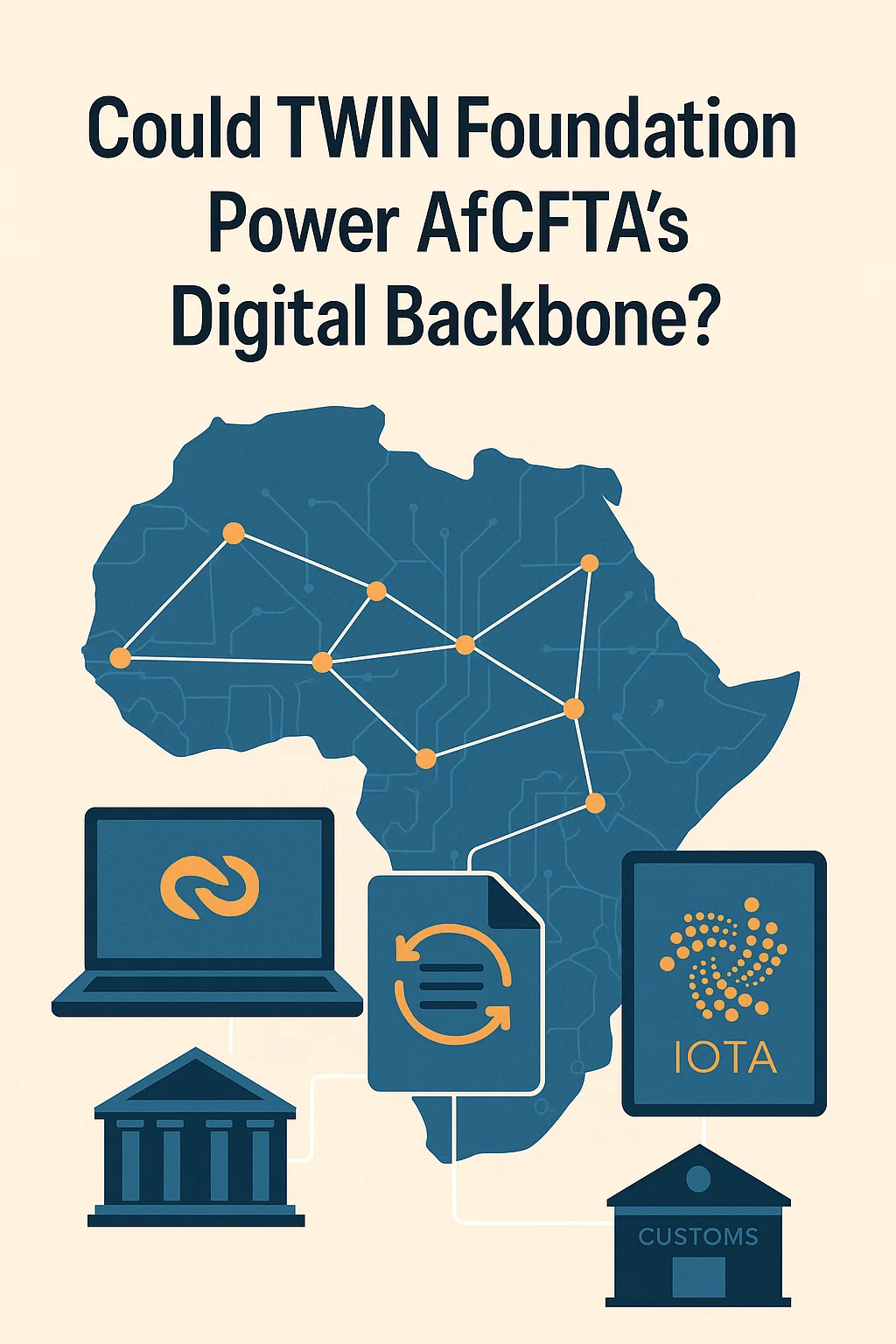Is This the End of Global Trade Bureaucracy? Deconstructing TWIN
TWIN proposes a Digital Public Infrastructure to revolutionize global supply chains. Here's how it works across three architectural levels—from apps to data services to trust framework.

Introduction
International trade is the engine of the modern world, yet it's running on a rusty old motor: mountains of paper, slow bureaucracy, and disconnected systems. The new TWIN (Trade Worldwide Information Network) Whitepaper proposes a radical engine swap—building a Digital Public Infrastructure to serve as the backbone for global supply chains.
But what's actually under the hood? Forget the complex tech jargon—here is how this revolution works, explained simply across three key levels.
🏢 The Three-Story Building: The Architecture
To understand TWIN, imagine a building with three distinct floors. Each level has a critical mission to connect the world without relying on a middleman.
1. The Penthouse: The Apps (Old Meets New)
Two worlds coexist on the top floor. On one side, we have TWIN Native Solutions—modern apps designed for this new era, like a "Digital Product Passport" that tells you the complete eco-story of your coffee beans or track-and-trace solutions providing visibility across entire supply chains.
But the brilliance is in how TWIN treats the "old world." It doesn't ask a farm in Kenya or a port in Rotterdam to throw away their old computer systems. Instead, it uses TWIN Adaptors.
Think of it like a Universal Travel Adapter: Just as an adapter lets you plug your hairdryer into a socket in any country, a TWIN Adaptor translates data from old systems into the language of the new network. This democratizes trade, allowing small businesses to connect with global giants without spending millions on new software. Existing systems like Single Window Systems, Enterprise Resource Planning systems, or customs broker solutions can participate through this common integration framework.
2. The Middle Floor: Data & Services (The Golden Rule)
This is where the TWIN Nodes live. To understand this, we have to unlearn how the "Cloud" usually works.
The Old Way (Centralized): You upload your file to a central server (like Dropbox or Google Drive). You lose a bit of control, and that server becomes a target for hackers.
The TWIN Way (Data at Source): TWIN follows a strict rule: Data stays at the source. If a factory produces a car part, the data about that part stays on the factory's own server. The TWIN Node acts like a secure pipeline that connects the factory directly to the car manufacturer only when authorized. No central database, no "Big Brother" holding everyone's secrets.
This middle floor also includes:
- Visibility Services that manage digital representations of trade items through their properties, relationships, and business events
- Document Management Services that facilitate discovery, retrieval, and verification of trade documents like certificates of origin, invoices, and bills of lading
- The TWIN Data Space Connector that enables actual data exchange between participants while enforcing access policies
3. The Foundation: Infrastructure & The Trust Framework
If there is no central "policeman" watching the network, how do we trust who is on the other side? TWIN uses Decentralized Identity (DID) and Verifiable Credentials.
The Passport Analogy:
- The Issuer: The government (a trusted authority) issues you a passport
- The Holder: You keep it in your pocket (or digital wallet). It belongs to you, not the government
- The Verifier: When you land in a new country, the border agent checks the passport. They don't need to call your home government to verify you; the security features on the document itself prove it's real
TWIN does this digitally. A business holds a "digital passport" (Verifiable Credential) in their wallet. When they reach a digital border, they show their credential. The system instantly verifies the cryptographic signature. It's fast, private, and secure.
The foundation also includes:
- The TWIN Catalogue - a decentralized registry that acts like a phone book for the network, allowing participants to discover who can provide which data, along with their access policies
- Verifiable Registry (using distributed ledger technology) - containing traceable and immutable records of participant identities
- Datastores and object stores for secure data availability
🕸️ The Engine: Why IOTA and not Traditional "Blockchain"?
Perhaps the most innovative part is that TWIN powers this building with IOTA's Tangle distributed ledger technology, not a traditional Blockchain like Bitcoin.
The Difference: Imagine a traditional Blockchain as a single-lane highway where every car (transaction) has to wait for the one in front of it. It gets jammed easily.
IOTA's Tangle: IOTA uses a Directed Acyclic Graph (DAG) structure where each transaction verifies two previous transactions, forming a web-like structure instead of a linear chain. The more traffic on the network, the faster and more secure it becomes.
Why it matters: Traditional blockchains have miners who charge fees. IOTA has no miners and no transaction fees. This makes it possible to track millions of low-value items (like individual packets of medicine) without the tracking cost exceeding the product's value.
Additional advantages include:
- Scalability: IOTA accommodates a growing number of participants and increasing network traffic
- Energy efficiency: Maintaining a low carbon footprint
- Decentralization: Removing single points of failure for near-continuous uptime
📈 Why This Actually Matters (Real World Impact)
This isn't just theory. TWIN technology is being tested through the Trade Logistics Information Pipeline (TLIP) project between Kenya and other markets, and the UK's Border Trade Demonstrators as part of the UK's 2025 Border Strategy.
Verified Results from Pilot Programs
According to recent pilot data from Kenya, Kenyan traders have seen transaction costs decline by 80%, cross-border processes have achieved a 96% boost in efficiency, and SME participation has increased by 35%.
Trade-related paperwork delays, which took weeks, are now being resolved in less than five minutes by UK border authorities.
The TWIN Foundation
On May 8, 2025, the TWIN Foundation was officially launched at the AfCFTA Digital Trade Forum in Lusaka, Zambia. The six founding partners are the IOTA Foundation, TradeMark Africa, the World Economic Forum, the Tony Blair Institute for Global Change, the Chartered Institute of Export & International Trade, and the Global Alliance for Trade Facilitation.
The Foundation's mission is to make global trade seamless, efficient and inclusive, with facilitation that could reduce trade costs by up to a quarter, unlocking $10 trillion in value worldwide.
🚀 Conclusion
The TWIN architecture is a paradigm shift. We are moving from "silos" (where everyone guards their own pile of paper) to a "collaborative web" (where data flows securely like water). By keeping data at the source and verifying trust cryptographically, we are building the digital highways of the future—where bureaucracy becomes a relic of the past.
Unlike previous commercial platforms that failed due to concerns over neutrality and data sovereignty, TWIN offers open-source infrastructure built on distributed ledger technology, enabling secure, transparent data exchange without a central controlling authority. Rather than replacing existing systems, TWIN connects with them through APIs, reducing implementation costs and complexity.
The potential impact is particularly significant for developing economies and small businesses, democratizing access to trade digitization and removing traditional barriers to global commerce.
Sources
- TWIN White Paper - Official TWIN documentation covering reference architecture, design principles, and technical implementation details
Written by IOTA Staking Team
Expert in IOTA staking, blockchain technology, and DeFi strategies. Providing actionable insights to help you maximize your staking rewards.
Related Articles

An Open Letter from an IOTA OG: We Didn't Just Survive – We Won
A retrospective on holding IOTA from 2017 to today, the transition to real-world adoption, and why staking is the victory lap.

US-Vietnam IOTA Trade Deal: Q4 2025 Speculation Analysis
Analyzing leaked reports of potential US-Vietnam agreements with IOTA for digital trade traceability. Bull, base, and bear scenarios examined.

Beyond the Hype: What IOTA's AfCFTA Role Could Really Mean
A speculative look at how IOTA, TWIN, and open-source DLT could build the digital trust layer for the AfCFTA, moving beyond the pilot phase.
